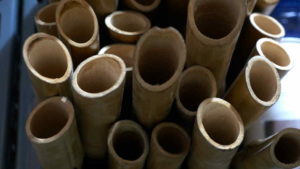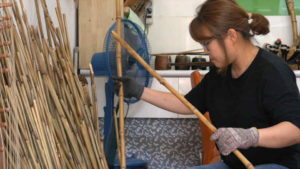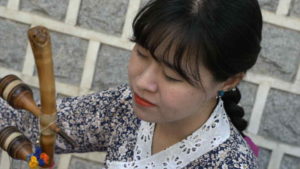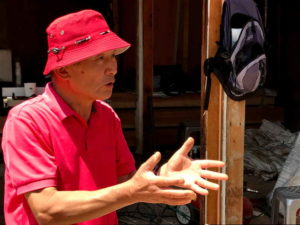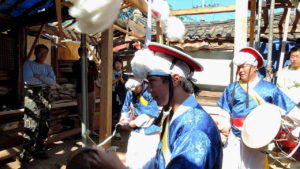“A Stitch In Time”
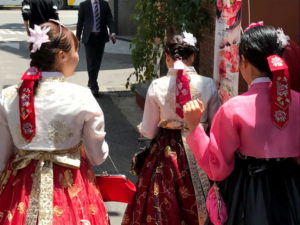
Women dressed in hanbok outfits
On any given weekend, the palaces in Seoul are filled with visitors – both local and foreign.
One thing stands out. Many of these visitors are dressed in hanbok, the traditional Korean costume typically worn on special occasions.
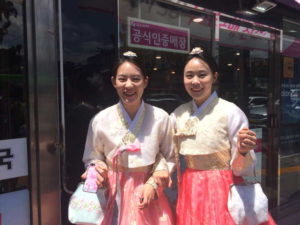
Tourists from all over Asia flock to rental shops to get fitted with the entire ensemble – hair, handbag, shoes and of course, the elaborate outfit.
Their goal?
For a brief moment, they will feel Korean. And all of it is captured in photos and selfies for lasting memories.

Empress Sunjeong of the Korean Empire – dressed in a royal hanbok (circa 1909)
But the hanbok was not always a tourist costume.

This traditional attire was everyday clothing for hundreds of years.
Then in the 20th Century, the hanbok became a casualty of the country’s modernization. The traditional clothing was cast aside for a more Western-style wardrobe.
In the business for more than 40 years, renowned hanbok designer Park Sul Nyeo, is considered the guardian of the hanbok tradition.
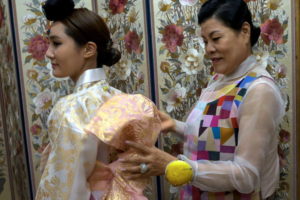
Renowned hanbok designer Park Sul Nyeo adjusts the elegant wardrobe
Starting from humble beginnings, Ms. Park is at the pinnacle of the hanbok world. Her revered designs and hanbok creations are one-of-a-kind event ensembles.
For Ms. Park, a woman does not wear a hanbok. Instead, the hanbok envelops her. The two become one. It is the epitome of femininity in traditional Korean culture.

“Yes, the hanbok is flamboyant. But when you wear it, it requires you to move differently… more modestly. More subtle. It affects your behavior.” – Ms. Park Sul Nyeo (Hanbok Designer)
Clearly Ms. Park continues to uphold centuries old traditions with her special event creations.
But does this mean that the hanbok as daily fashion is extinct?

Fashion designer Sun Kyung-ki
At the ripe old age of 26, Ms. Sun Kyung-ki runs a tiny shop in the trendiest part of town. Ms. Sun creates clothing for everyday people for everyday life – all based on the hanbok’s classical roots.
It is the hanbok – reimagined.
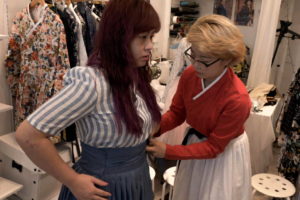
Fashion designer Sun Kyung-ki fits customer Vivian Wu in her new hanbok-inspired clothes
“Even though people consider it a dying business, I want to give it strength to grow, to revive it… a rebirth.” – Ms. Sun Kyung-ki (Fashion Designer)
No doubt the hanbok will remain the outfit for formal occasions.
But can it regain its popularity as everyday wear?
Or is it a fad that will be tossed aside during the next fashion cycle?
Or will it forever be just a tourist costume?
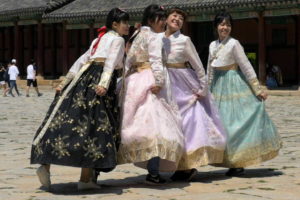
All is revealed in Episode 8 – South Korea of “Vanishing ASIA.”





